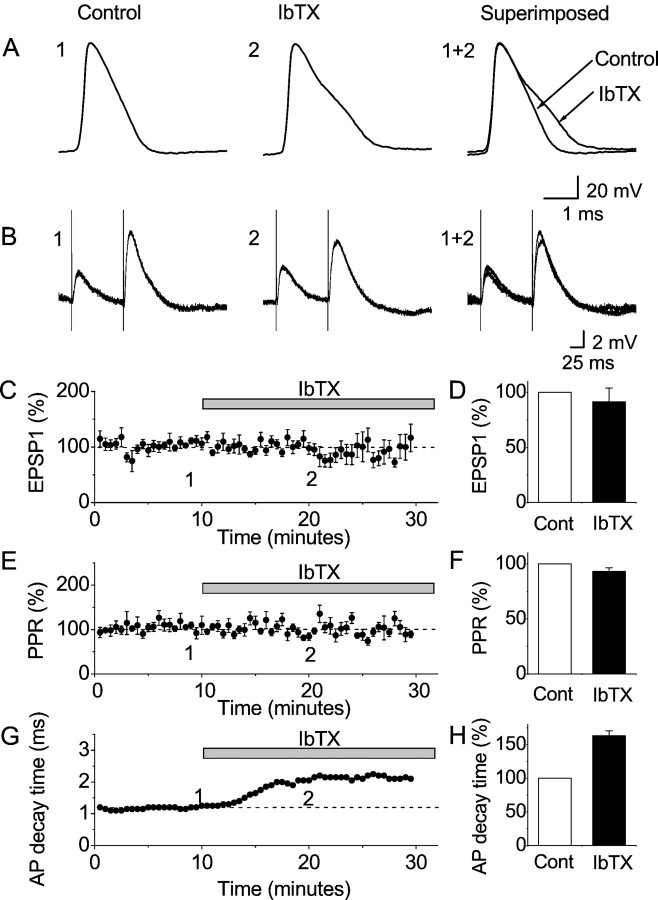Fig. 6.
In the absence of 4-AP, IbTX broadened the action potentials but had no apparent effect on synaptic transmission and in CA1 pyramidal cells; whole-cell recording. A, Representative records of the first action potentials evoked by current pulses (Fig. 3A), before and after application of 100 nm IbTX. B, EPSPs in response to paired stimulation of presynaptic fibers in stratum radiatum. The resting membrane potential was adjusted to −70 mV by steady current injection, and action potentials were evoked by injecting a 100-msec-long depolarizing current pulse once every 30 sec (as in Fig. 3). Representative single traces before and after bath application of 100 nm IbTX are shown. C–D, Summary data showing the effects of 100 nm IbTX on the EPSP amplitude (first EPSP in the pair, normalized; n = 8 cells). Unlike in Figure 3, the EPSPs never triggered action potentials. There was no significant effect of IbTX on the EPSP amplitude (p = 0.36; n = 8). E, F, Summary data showing the effects of 100 nm IbTX on the paired-pulse ratio (PPR, normalized; n = 8 cells). There was no significant effect of IbTX on the PPR (p = 0.079; n = 8).G, Time course of the action potential broadening caused by 100 nm IbTX (90–10% decay time) for the cell illustrated in A and B. Values for first action potential in each spike train are plotted (Fig.3A). H, Summary diagram showing the effect of 100 nm IbTX on the action potential decay time (first spike in the train; n = 8 cells). The effect of IbTX on the action potential decay time was highly significant (p = 0.000031; n = 8). All diagrams (C–H) show mean ± SEM, normalized to the control period.

